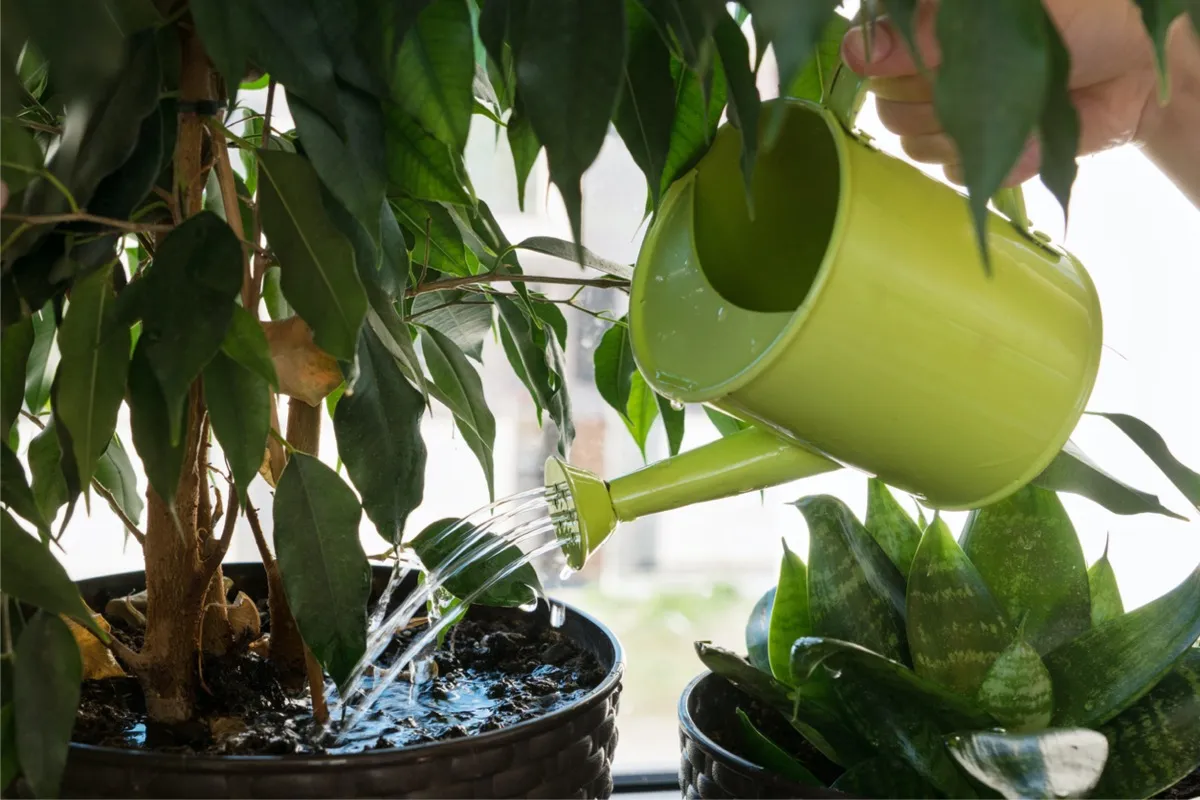How Harmful Bugs Destroy Our Garden

Watering is essential for plant health, but too much of it can be just as harmful as too little. Overwatering can lead to root damage, disease, and even plant death. Recognizing the signs of overwatering early can help prevent long-term harm and allow you to adjust your care routine accordingly. Below are the key symptoms that indicate a plant is receiving more water than it needs.
1. Yellowing Leaves (Especially on Lower Parts of the Plant)
One of the most common signs of overwatering is the yellowing of leaves, particularly on the lower part of the plant. This happens because excess moisture in the soil prevents roots from properly absorbing oxygen. Without adequate oxygen, the roots struggle to deliver essential nutrients to the plant, leading to chlorosis (leaf yellowing). The yellowing often starts subtly, with light discoloration at the edges or tips before spreading to the entire leaf. Leaves may feel soft or limp instead of dry and crisp, which would be a sign of underwatering. In severe cases, the plant may develop an overall weak and unhealthy appearance.
suspect overwatering, allow the soil to dry out before watering again, and consider improving drainage by loosening the soil or using pots with drainage holes.
2. Wilting Leaves, Even When the Soil is Moist
While wilting is often associated with dry soil and dehydration, an overwatered plant can also appear wilted despite the soil being damp or soggy. This occurs because excessive water drowns the roots, reducing their ability to take in oxygen and nutrients. As a result, the plant essentially “suffocates,” leading to wilting even though the soil is moist. Wilting may occur during the hottest part of the day but not recover in the evening, which is a key sign of overwatering. The leaves may feel overly soft or weak instead of firm. In some cases, the stems also become weak and may droop.
3. Soft, Mushy, or Curling Leaves
Overwatering can cause leaves to become soft and mushy due to excess moisture accumulating inside the plant tissues. This weakens the cell structure, leading to a limp or collapsed appearance. If leaves are mushy and translucent, it is a strong indication of water damage. Some plants, particularly those with broad leaves, may start to curl inward as a response to stress. If not addressed early, the affected leaves may develop brown or black spots, indicating rot.
4. Leaf Drop (Even When Leaves Are Green)
Another key symptom of overwatering is when otherwise healthy-looking leaves unexpectedly fall off the plant. Normally, plants shed old or unhealthy leaves gradually, but when overwatered, they may drop multiple leaves at once—even those that are still green. This occurs because excess moisture disrupts nutrient uptake, leading to stress and premature shedding. Leaf drop is particularly common in tropical houseplants, like Ficus and Dracaena, when their roots remain too wet for extended periods. Affected plants may appear sparse or leggy due to excessive leaf loss.
5. Brown or Black Leaf Tips
When plants receive more water than they can process, the leaf tips may start to turn brown or black. This happens because excess moisture damages the plant’s vascular system, leading to tissue death at the leaf extremities. Brown or black tips may first appear crispy before turning mushy if root rot has set in. The discoloration often begins at the edges and gradually moves inward. In extreme cases, entire sections of the plant may darken, indicating that root rot has spread.
Final Thoughts
Overwatering is a common mistake among plant owners, but it can be corrected with proper care. By recognizing the early signs—such as yellowing leaves, persistent wilting, mushy foliage, unexpected leaf drop, and darkening leaf tips—you can take the necessary steps to adjust watering habits and improve soil drainage. Ensuring that the soil dries out between watering sessions and using well-draining pots can help prevent overwatering and keep your plants healthy and thriving.
